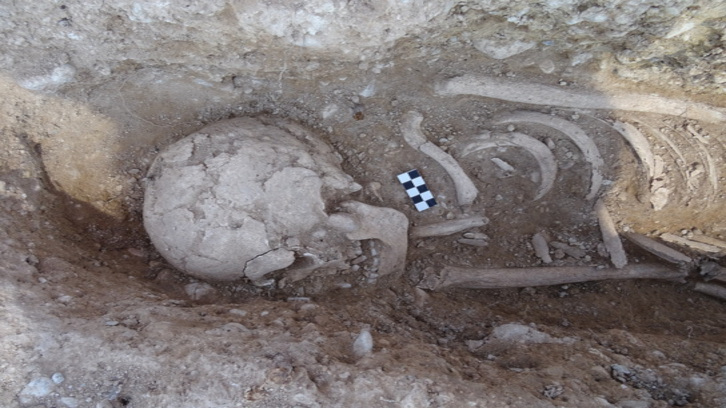New archaeological and historical data on al-Andalus

One of the main debates about the al-Andalus society (8th to13th centuries) focuses on knowing the origin of its populations and the importance of the contributions made by the Arab and Berber migrants. The study of the funeral registry of Islamic ritual in Catalonia and the province of Castelló has made it possible to make inferences about population distribution, severe characteristics, and influential factors. Julia Olivé from the UAB Department of Antiquity and Middle Age Studies, in collaboration with other universities, presents an article resulting from her PhD thesis in which she presents promising data for study in the field of archaeology and history.
The Islamic conquest of the Iberian Peninsula led to the formation of a new society, that of Al-Andalus. Its people were buried following the Islamic rite, with the corpse on its right side and facing Mecca. The Andalusi funerary record allows to study the population through its skeletal remains, and make inferences with the obtained data. It seems that the chronology and permeability of the Islamic conquest have affected the funerary record as cities such as Girona and Barcelona (and their then rural environment) have a lower density of burials in comparison to the number of burials that are located in Terres de l'Ebre and, to a greater extent, Castelló. It is difficult to assess the role played by both the proximity of the frontier in Catalonia and the permanence of part of the Andalusi population in the vicinities and the south of the Ebro river, as in most cases radiocarbon dating is not available.
Regarding the observed burial ritual and demographic composition, no major differences are observed, and it seems that the Islamic ritual was already applied at very early stage without major deviations. The reuse of Late Antiquity rural spaces as Islamic burial grounds in some places is worth noting, as well as the coexistence of these burials, also in the city of Girona, with Christian burials. Both burial rituals, Christian and Islamic, took place either synchronously or consecutively. This suggests that for a time there were religiously mixed communities, or that the same group adopted Islam in a lapse of time short enough to still recognise their Christian ancestors.
Even though the results that this study has yielded are certainly promising, there is still a long way to go. There is a need to not only obtain more radiocarbon analyses that reliably date human remains but also to perform genetic and / or geochemical analyses, especially in those individuals from an earlier period. The aim of these analyses is to contribute to one of the main ongoing discussions about Al-Andalus: the origin of these populations and the importance of the Arab and Berber populational contribution. In this sense, this research team has established collaborations to determine the genetic composition of the Islamic populations of Balaguer (Lleida) and the Vall d'Uixó (Castelló), and has also initiated statistical analyses which will allow to evaluate the biological distance between these two populations by means of phenotypic features.
Júlia Olivé-Busom1 ; Helena Kirchner1 ; Olalla López-Costas2-3-4 ; Nicholas Márquez-Grant5
1Departament de Ciències de l’Antiguitat I l’Edat Mitjana, Universitat Autònoma de Barcelona.
2Group EcoPast (GI-1553), Universidade de Santiago de Compostela.
3Archaeological Research Laboratory, Stockholm University.
4Laboratorio de Antropología Física, Facultad de Medicina, Universidad de Granada.
5Cranfield Forensic Institute, Cranfield University, Defence Academy of the United Kingdom.
References
Olivé-Busom, J., Kirchner, H., López-Costas, O., & Márquez-Grant, N. (2020). Arqueología funeraria andalusí en Cataluña y la provincia de Castellón. Arqueología Y Territorio Medieval, 27, 235-267. DOI del artículo: https://doi.org/10.17561/aytm.v27.5395

